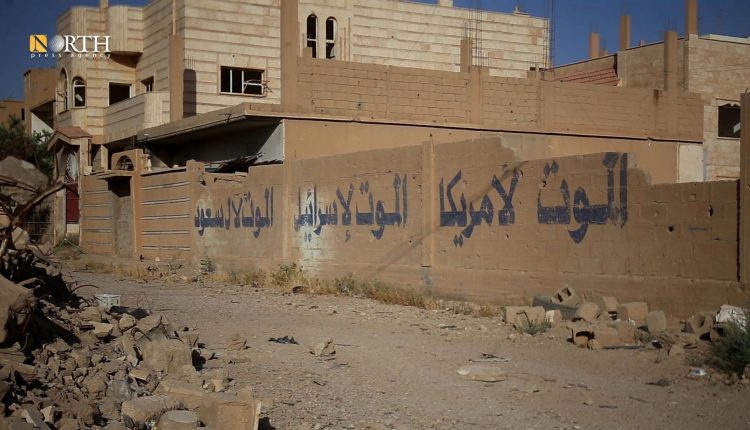
By Ali al-Beki’
DEIR EZ-ZOR, Syria (North Press) – In the aftermath of years of war, residents of towns and cities in Syria’s eastern Deir ez-Zor countryside are beginning to return home—but what they find is more disturbing than destruction alone.
The physical traces of conflict run deeper than crumbling walls or bullet-scarred facades. Beneath homes lie vast networks of tunnels once used by Iranian-backed militias, and neighborhoods that were once lively have been hollowed into fortified hideouts, not to mention looting, devastation.
Homes turned to tunnels
Omar Abdulaziz al-Aran, a resident of the town of Abu Kamal, told North Press, “These areas, of course, were all Iranian military bases. We were never able to return to them until after liberation.”
He described the region as a closed military zone for years. “”When we came back, we found all homes looted and destroyed. Roads were blocked,” he said, noting that residents, with support from local authorities, have begun reopening streets and attempting to restore life to the city.
But the shock came from what lay beneath. “There are many tunnels in these areas. Because this was “Area 47,” controlled by Iranian militias. That’s why there are tunnels in almost every house, one or two tunnels,” he added.
Iranian-backed militias first entered the western bank of the Euphrates in Deir ez-Zor in 2017, ostensibly to support Syrian government troops in their fight against the Islamic State (ISIS). They took control of areas stretching from the city of Deir ez-Zor to Abu Kamal, near the Iraqi border, and expanded their influence to seven towns east of the river.
Not allowed to return
In the village of al-Ghabra, the story is the same—if not worse.
“These are our homes here. Every time we come back, they either attack us or don’t allow anyone to come near,” said Ahmad al-Jaloud al-Hamdi, a local resident.
He described how residents were forcibly kept out while their homes were turned into military headquarters.
“They left nothing behind—no doors, no windows, no furniture. The day they withdrew; we were shocked to discover the tunnels. They turned the mosque into a Husseiniya (Shiite religious center). The school was also destroyed and looted.”
As part of what appeared to be a larger campaign of ideological transformation, Iranian-backed militias encouraged sectarian conversion by financially incentivizing tribal leaders and clerics to adopt Shiite doctrine. Husseiniyahs were built, and Shiite-oriented curricula were introduced into local education, aiming to mold a new generation loyal to Tehran.
Notably, Nawaf Ragheb al-Bashir (head of the al-Bakara tribe) and Farhan Muhammad Hamad al-Marsoumi (head of the al-Marasma tribe) played key roles in this sectarian shift, capitalizing on their lineage tracing back to the Prophet Muhammad’s family (Ahl al-Bayt).
But efforts to reclaim what was lost were met with silence.
“We went to demand our homes,” said al-Hamdi, “but no one listened.”
Executions and landmines
Kamal Abdel Qader al-Ibrahim, 63, returned to Deir ez-Zor only to find a nightmare beneath the rubble.
“We came and found our homes full of tunnels. They were turned into hideouts for the Iranians.”
He recounted brutal tactics used by Iranian-backed militias, including false-flag operations. “They go into the desert and kill shepherds under the pretext that they are ISIS. They pretend to be ISIS themselves, and take sheep, along with PMF and Hezbollah.”
In early 2020, seven shepherds were executed in the village of Ayyash by gunmen disguised as ISIS. Iranian-backed militias were reportedly behind the attack, using it to justify seizures of livestock and territory.
“They planted landmines across the desert, ” said al-Ibrahim. “Many people have died because of those mines. They built a road from Abu Kamal to Lebanon. They planted mines on both sides of the road. We can no longer reach our land.”
For residents of al-Bukamal, al-Ghabra, and Deir ez-Zor, returning home is not the beginning of healing but the start of a new struggle. The withdrawal of militias has not erased years of war, nor has it restored what was lost. Instead, they face a landscape disfigured by tunnels, riddled with explosives, and emptied of its past.
